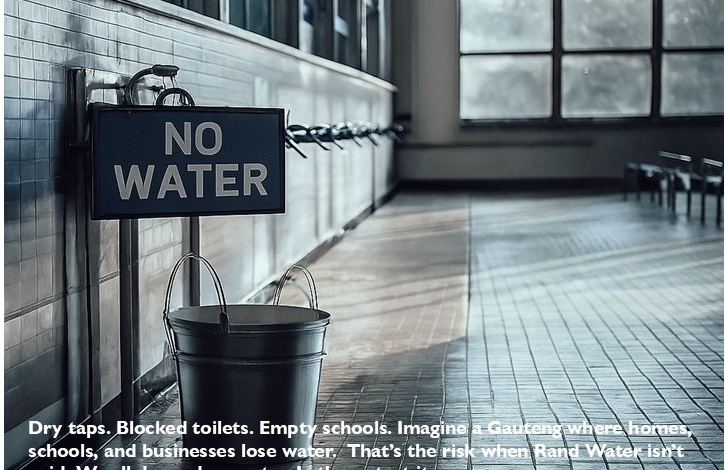Water Throttling Explained: Why Your Taps Run Dry at Night

Many residents in Gauteng have noticed that their taps run dry or water pressure drops significantly at night. This is due to a water supply management process known as throttling, implemented by Johannesburg Water and other local authorities. Understanding throttling helps residents make sense of the strategy and encourages water-saving behaviour during challenging supply periods.
RELEVANT ARTICLE: JoJo Tanks, Boreholes & Rainwater Harvesting: Best Backup Options for Gauteng Homes
Table of contents
What Is Throttling?
Throttling, also called water supply reduction or water titration, involves deliberately reducing water pressure and flow in the municipal water network during certain hours, usually overnight from 6pm to 5am. It is a temporary water-saving measure designed to manage limited resources effectively.

Why Throttling Is Necessary
Johannesburg and broader Gauteng face high water demand close to or exceeding available supply due to increased consumption, aging infrastructure, burst pipes, illegal connections, and leaks. With reservoir levels dropping, water throttling allows essential water storage bodies to refill overnight.
By reducing water use during low-demand hours, authorities can preserve reservoir capacity, stabilise supply, and prevent complete shortages during daytime peak hours.
How Throttling Works
Between 6pm and 5am, pressure management systems reduce pressure in water pipelines by partially closing specific valves or installing pressure controllers. This reduction slows downstream water flow to allow reservoirs and pumping stations to recover.
Throttling is not a full water cut but lowers water availability, often leading to taps running dry or significantly reduced flow, which resumes when normal pressure returns in the morning.

Addressing Residents’ Concerns
Many express frustration about the inconvenience of reduced water pressure or dry taps at night. However, authorities emphasise that throttling is vital for preventing longer daytime outages or worse shortages.
Water demand in Johannesburg currently exceeds the daily allocation from Rand Water by significant margins. With estimates showing up to 46% of treated water lost to leaks and illegal connections, water-saving behaviour across the city is crucial.
What Residents Can Do
- Avoid excessive water use, especially during the day
- Fix leaking taps and report bursts promptly
- Limit use of non-essential water appliances
- Store water before throttling hours for night-time use
- Support municipal efforts by using water responsibly
Mitigation Measures
Gauteng authorities have put in place several mitigation measures to address the water shortage and reduce the need for throttling. Level 1 water restrictions remain in effect, limiting activities such as filling swimming pools, washing vehicles with hoses, and irrigating gardens during peak daylight hours. Residents are urged to adopt water-saving habits like shorter showers, using buckets for handwashing, and reusing greywater when possible.
Addressing Water Supply Challenges
Infrastructural upgrades and leak repair programmes are a priority, with municipalities working alongside Rand Water and other partners to fix burst pipes and replace aging infrastructure. The Gauteng Provincial Government launched the Water Dashboard initiative enabling residents to monitor water availability and report issues promptly. These steps aim to reduce water losses, currently estimated at more than 40%, caused by leaks, illegal connections, and vandalism.

Community cooperation and responsible water usage remain essential. Municipalities are also exploring smart pressure management systems and are considering investing in alternative water sources such as boreholes and rainwater harvesting to ease pressure on the municipal system.
Long-Term Solutions Underway
Johannesburg Water and other municipalities are accelerating leak repairs, upgrading infrastructure, and developing new reservoirs and pumping stations. Pressure management through throttling is just one part of comprehensive strategies to restore system stability.
Water Supply
Throttling ensures better water security for Gauteng by allowing reservoirs to recover overnight. While inconvenient, it is a necessary measure to balance demand and supply amid ongoing water challenges. Communities can help by conserving water and supporting efforts to improve infrastructure for a more reliable future.




